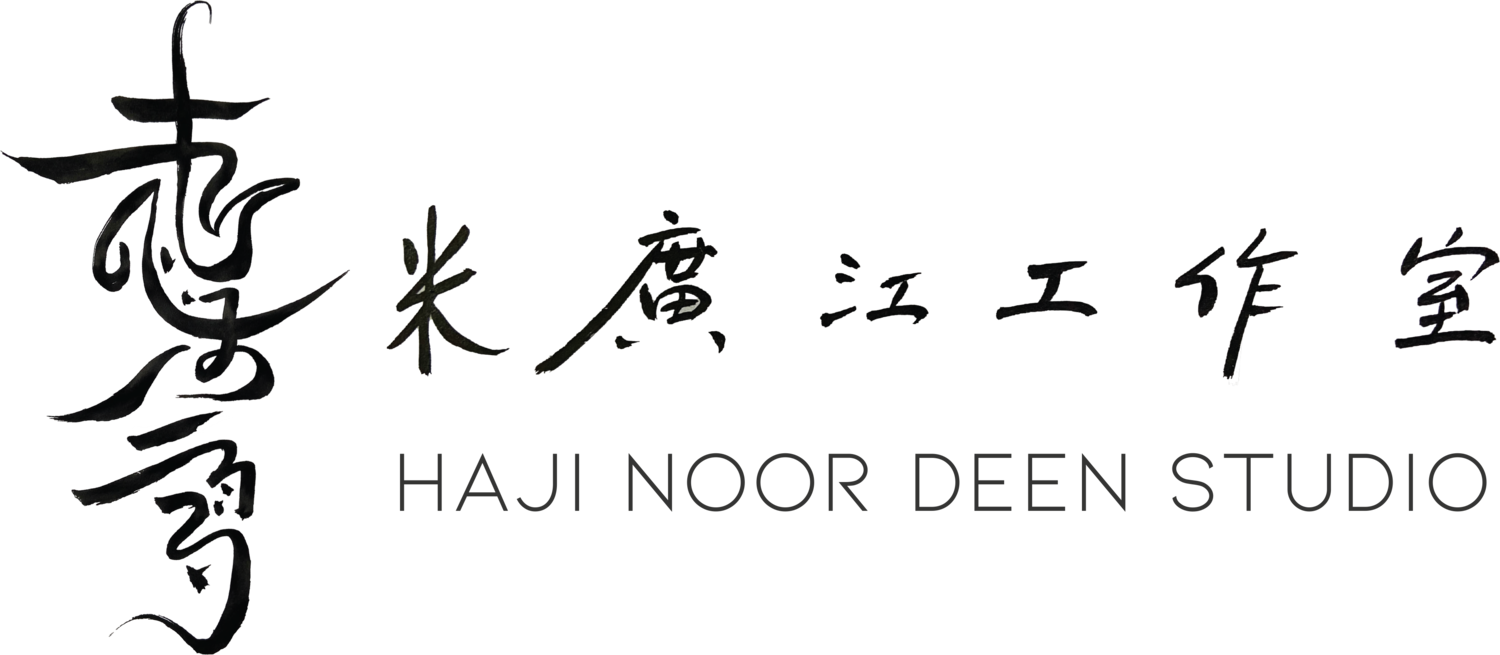Arabic Calligraphy in the Chinese Tradition
After Islam spread to China, the Chinese Muslims incorporated some characteristics of Chinese calligraphy into traditional Arabic calligraphy.
Traditional Arabic calligraphy in China represents the essence of the artistic work of generations of calligraphers, a unique cultural fusion of Chinese culture and Islamic art.
Traditional Arabic calligraphy in China is the tools of the trade can be used to classify the two major techniques of classical writing: the two fonts, differentiated by their tools, are the hard brush style, [one] uses a piece of bamboo, a wood stick, or a carved animal bone implement to write; with soft brush font, [one] uses a brush made of wool, hair, or plant fibers to make a writing implement. According to geographic locale, Chinese-Arabic calligraphy can be further divided into three branches (or schools): the Northern, the Southern, and the Western. Each of these styles can be classified according to the script in which they appear: the scripts include the imitation Han Imperial, the Honor writ script (Bang Shu script), the Tu ma ri script, drawings of Qur’anic letters, and the carved Arabic script [used for carved surfaces]. And the mechanisms of cultural exchange between Chinese and Arabic cultures are at work once again: another two fonts, the Diwani and the Thuluth, have recently made their way into the Chinese calligraphic milieu and are quite popular.
Chinese-Arabic calligraphy borrowed from the precepts of Chinese poetry, and the techniques of Chinese artistic production also influenced the Chinese-Arabic script. From Chinese art came the mode of artistic exaggeration (visual hyperbole), division (of work surface or calligraphy), the technique of curving [the work], the technique of juxtaposing positive from and negative space (called the technique of the true false), the mode of the thin and the thick, the modes of creative borrowing, and the techniques of dimensional hatching and partial overlays.
By way of shape, Chinese-Arabic calligraphy incorporates the rectangle, square, circle, rhombus, fan, triangle, polygon, flower, fruit and medallion into its visual vocabulary.
The types of Arabic calligraphy in the Chinese style are:
Calligraphy of the Mus’haf (Quran) in the Chinese Style.
Calligraphy of Religious Book copies.
Wide Style Calligraphy
Portrayal Calligraphy
Brush Style Calligraphy
Hand illustrated Calligraphy
Traditional Arabic Calligraphy simulated in the Chinese tradition.
There are also other types similar to the Musalsal style that can be produced on cloth, iron appliquéd drawings, seal engravings, brick engravings, woodcarvings, monument engravings, and embroidery, etc.
Traditional Arabic calligraphy in China is the most representative form of Islamic art in China. The work must be balanced, although individual characters may be of different sizes. The artwork must be completed in one goal in order for it to have clarity, rhythm and a three-dimensional feel. There is a certain unique spirituality to this form of art.
Traditional Arabic calligraphy in China is vivid and varied, recalling visions of galloping horses, majestic mountain ranges, and rolling streams, with untold aesthetic value and artistic appeal. It is reminiscent of music without a tune, of pictures with feeling. Like a dancing maiden, it is full of delicate lines, natural and subtle, fulfilled by a rich imagination. It is the legacy of the Islamic heritage in China, and a cultural and artistic treasure of the world.
Haji Noor Deen Mi Guangjiang
Written in the Chinese House for the Arts of Islamic Arabic Calligraphy
Zhengzhou, China, in Ramadan, 2009

